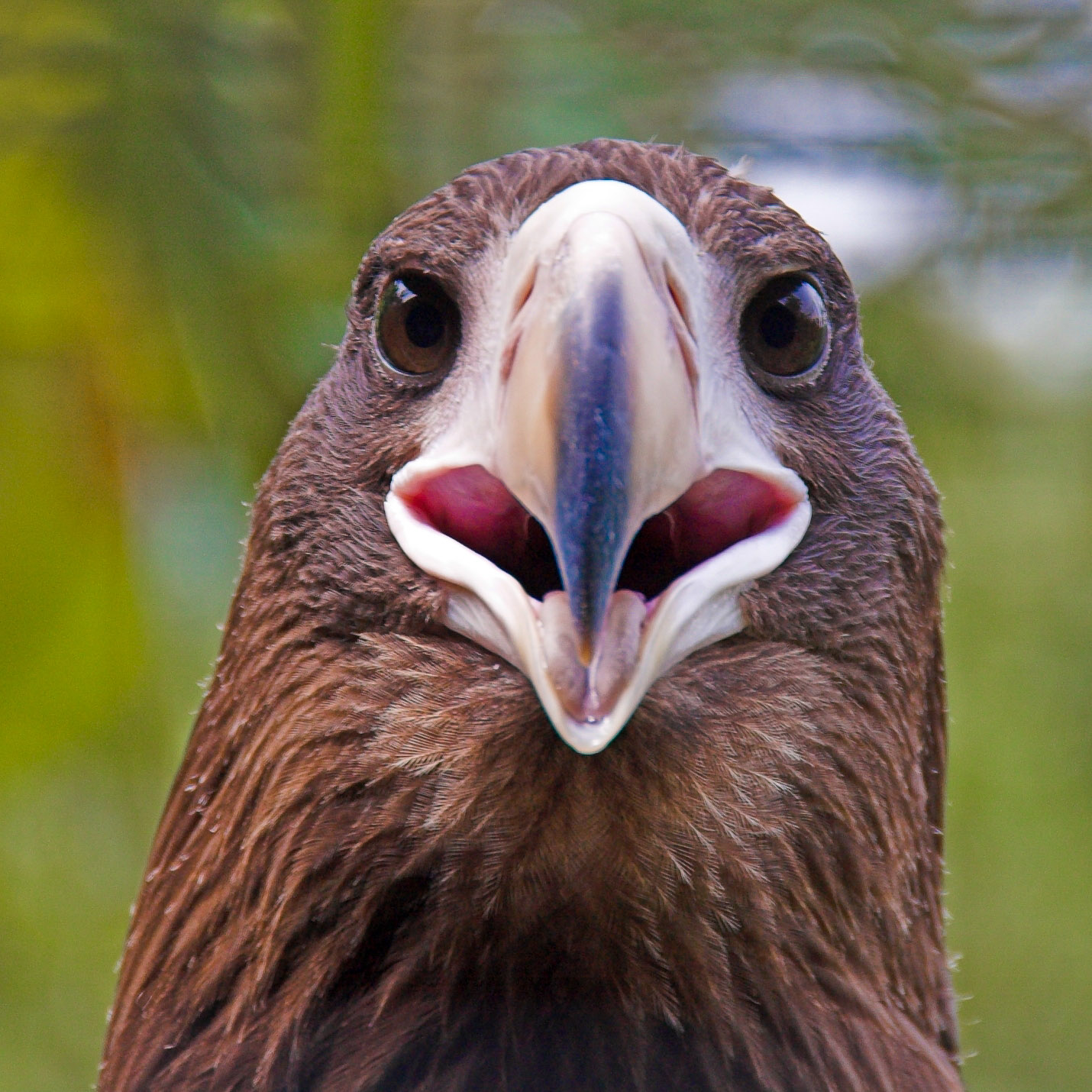Working Around Zoo Bars

At the risk of stating the obvious, photographing animals in a zoo is, in many ways, easier than photographing them in the wild. But you shouldn't dismiss zoo photography as trivial — it brings its own challenges. A wire cage, for example, is an obstacle rarely found in the wild.
This eagle was enclosed in just such a cage. The holes between the wires were too small to fit a lens through, and I had no desire for a photo with an ugly wire mesh in the foreground.
Luckily, photography abounds in techniques for overcoming obstacles that might, at first blush, appear insurmountable. When faced with a wire cage, it is often possible to blur the wires to such an extent that they disappear. To do this, put the lens directly against the wire mesh, choose a large aperture, and manually focus on a distant subject.
There are downsides to this technique. The most serious are the limitations on sharpness and depth of field imposed by the large aperture. There is also a loss of contrast, which can usually be recovered — albeit imperfectly — during post-processing.
It's always preferable if tricks like this aren't needed. But in the field, conditions are rarely perfect. Not even in a zoo.